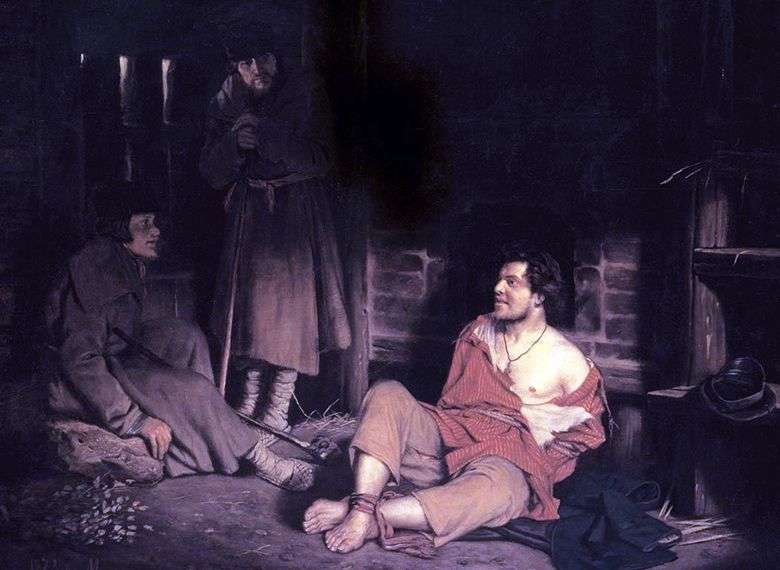
The work of Vasily Perov from the 70s of the 19th century is firmly connected with the theme of the Pugachev rebellion, which shook the whole of Russia with its courage, strength and ruthlessness. The painting “Otpety”, created in 1873, was also painted under the impression of a peasant uprising that swept the country.
The protagonist of the picture – a simple guy from among the peasants. He is half sitting on the floor, securely bound hand and foot with thick ropes. Poor clothes are torn, no shoes at all. His confident, bold glance of a man of explosive temperament, a proudly raised head, a half-smile expressing sheer contempt – all this betrays in him a rebel, a real chieftain, ready to lift and lead the people. He feels neither despair nor disappointment, at any moment, at the first opportunity he is again ready to rush to fight. Such a dashing young man, an incorrigible rebel, cannot be changed or rehabilitated by anyone, as the artist says about this picture.
The opposite of a young anarchist rebel are his sentries. Hidden in the shadows, faceless, poorly prescribed guards – only observers, with fear looking at the arrested. They are afraid of him and those like him – fearless and inflexible. The guards are a gray mass of people, while the rebel, pointedly dressed by Perov in red clothes, is unique in his determination and readiness to resist them and the old order in general.
While working on Pugachev’s paintings of the plot, creating Ottagoi, the artist sought to show the power and greatness of the Russian spirit, the power of the common man, but he never shared the crude methods of the leader of the Peasant War and his entourage.
 Old parents on the grave of his son by Vasily Perov
Old parents on the grave of his son by Vasily Perov On the railroad by Vasily Perov
On the railroad by Vasily Perov Drowned woman by Vasily Perov
Drowned woman by Vasily Perov Troika. Pupils artisans are taking water by Vasily Perov
Troika. Pupils artisans are taking water by Vasily Perov Nikita Pustosvyat. The dispute about faith by Vasily Perov
Nikita Pustosvyat. The dispute about faith by Vasily Perov Sermon in the village by Vasily Perov
Sermon in the village by Vasily Perov Otpety – Vasily Perov
Otpety – Vasily Perov Portrait of Dostoevsky by Vasily Perov
Portrait of Dostoevsky by Vasily Perov